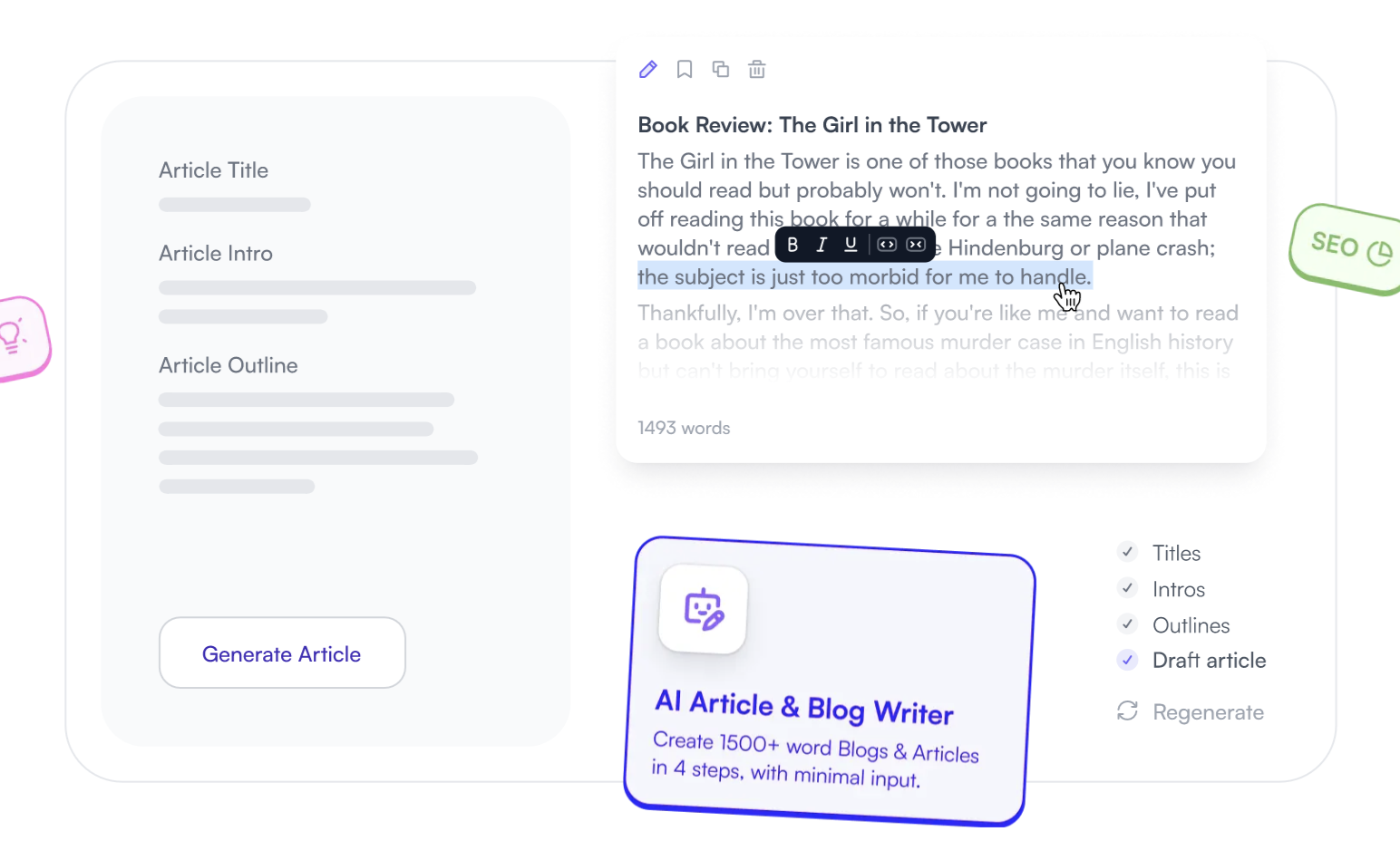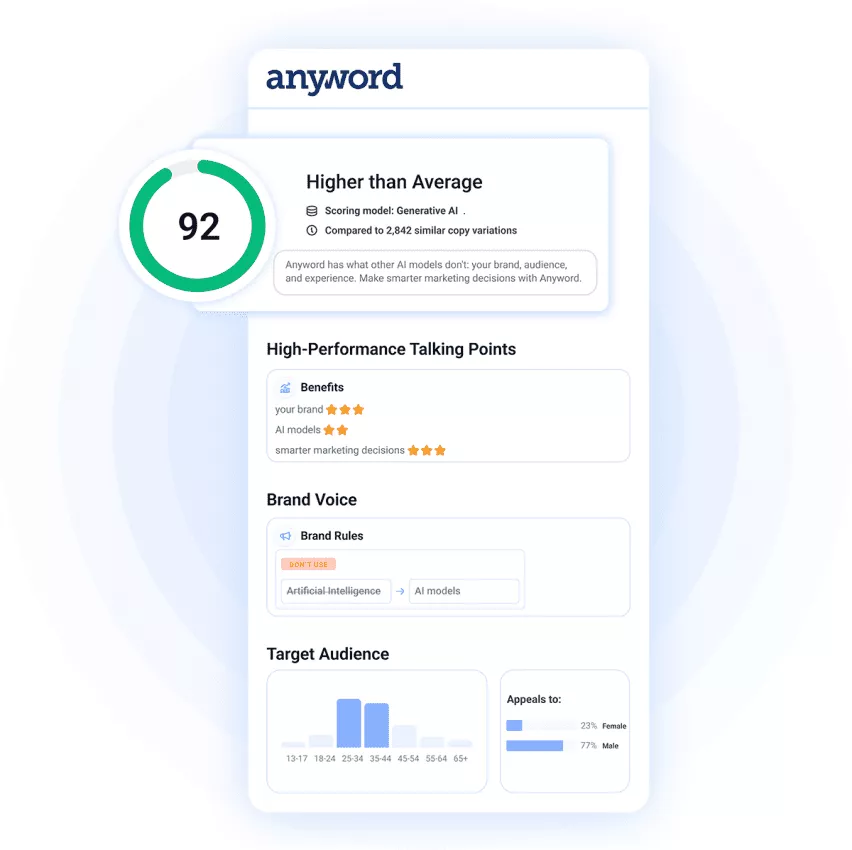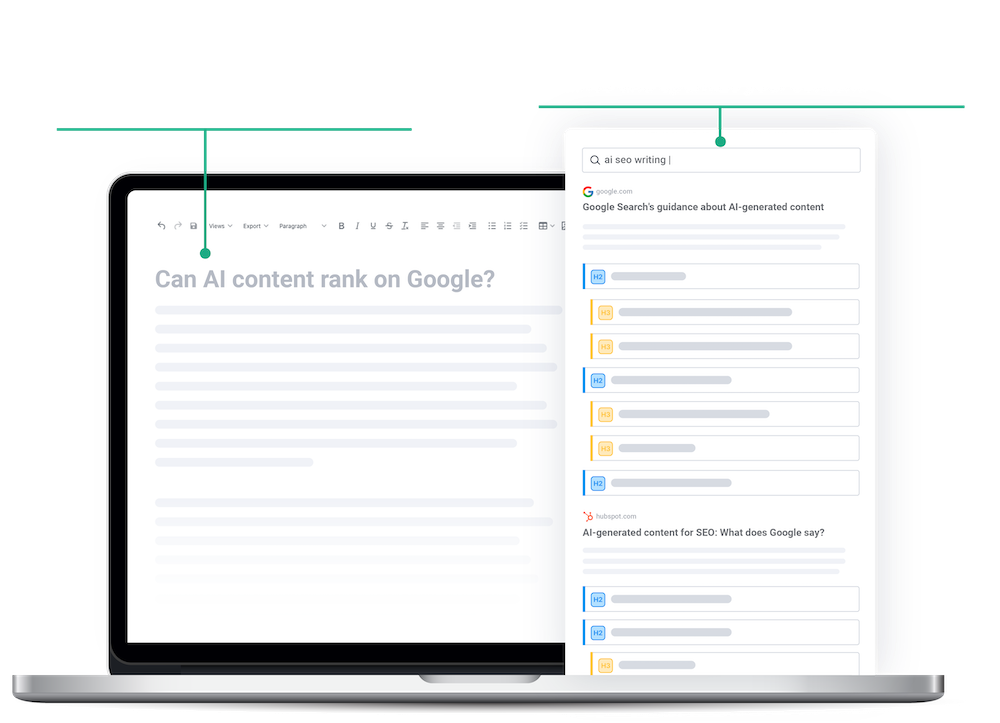MARKETING
10 Alternatives to Jasper.ai, ChatGPT, and Other Popular AI Tools

At this point in time, it’s becoming quite obvious that generative AI isn’t going anywhere. In fact, the market’s projected to reach $126.5 billion by 2031, growing by 32% from 2022 to 2023.
If your role involves copy or content marketing, you’ve probably heard of Jasper.ai and ChatGPT, and a few of their alternatives. At a glance, today’s AI content tools might seem pretty similar. But, there are a variety of factors to consider, including the types of content they specialize in, versatility in generating different pieces of content, UX, and price.
In this blog post, we will go over the top 10 AI writers that are comparable to Jasper.ai and ChatGPT, delving into specific features of each.
Jasper.ai Alternatives
HubSpot Content Assistant

Get started with Content Assistant.
HubSpot Content Assistant goes beyond helping you write copy. It can help you generate topic ideas for blogs, create blog outlines, write paragraphs, create professional prospecting and marketing emails, and more, all in one place.
Integrations with HubSpot’s content marketing tools means you don’t need to move between different platforms for your generative AI content needs
Key features:
- Generate blog titles, headers, meta descriptions, and email subject lines.
- Get tone suggestions.
- Built-in integration with HubSpot’s content marketing tools.
Price: Content Assistant is currently in beta but will be free, with additional features for premium customers, when it’s publicly released. Learn more or sign up for our waitlist here.
GrammarlyGO
You may know Grammarly as a cloud-based typing assistant that reviews spelling and grammar. But it’s since expanded to include GrammarlyGO, an AI writing assistant.
GrammarlyGO can help you produce topic ideas and outlines. You can also personalize the app to your own voice with options for tone, formality, and professional relevance.
Key features:
- Generate topic ideas and outlines.
- Customize voice, tone, and formality options.
- Automate email responses based on context-specific prompts.
Price: Free, Premium, and Business plans are available.
Conversion AI Alternatives
Smart Copy

Smart Copy, formerly known as Snazzy AI, can create landing pages, Google Ads, taglines, product descriptions, meta descriptions, and more. Some of the standout features of the tool are its 45+ available content templates available, as well as the ability to create a profile for target audiences that copy can be generated for.
Writers can best use Smart Copy for landing pages and websites, digital ads, emails, e-commerce, and branding.
Key features:
- 45+ templates.
- Editing features for paid versions.
- Target audience profiles.
Price: Starter for Free and Growth at $49/month.
Copy.ai

Copy.ai is a writing tool that helps you generate copy for blogs, ads, e-commerce, sales, social media, and websites. You will be able to input your writing project and main points you’d like to cover, and choose a tone that suits your objectives.
Unlike Jasper.ai, Copy.ai doesn’t have word limits. Furthermore, Copy.ai leverages AI to automate workflows like writing personalized cold emails and bulk product descriptions.
If you’re interested in generating search traffic, the software also offers programmatic SEO, where you can submit a keyword and generate an outline based on SEO research.
Key features:
- No word limits.
- Programmatic SEO: take a keyword and generate an outline based on SEO research.
- A/B testing copy.
Price: Free version, Pro at $36/month, and pricing upon request for Enterprise
Writer

The name “Writer” might be simple, but the platform is quite versatile. Writer contains features like LLM “clay” which combines writing, business context, your own content, and your company facts. It also fact-checks your content for accuracy and can generate copy that’s consistent with your brand voice.
Writer can be used for a wide range of purposes, including content marketing, product marketing, and demand generation.
Key features:
- Trained to learn your brand voice for consistent copywriting.
- Custom templates tailored to content requirements like word count.
- Knowledge graph connects Writer with data sources like company wikis, databases, cloud storage platforms, and chat channels.
Price: Team at $18 per user/month and custom pricing upon request for Enterprise.
ChatGPT Alternatives
Writesonic

Writesonic’s AI Writer creates long-form blogs while its Sonic Editor writes sales emails, essays, reports, and ebooks.
The platform offers editing tools – like Paraphraser, Expander, and Shortener – that help you polish your copy, as well as e-commerce features that generate SEO-optimized titles, product descriptions, and bulleted product feature lists.
Key features:
- Support for long-form content.
- Content editor.
- E-commerce tools.
Price: Free trial available. Pro at $12.67/month and custom pricing upon request for Enterprise
Text Cortex

Text Cortex’s AI assistant, called Zeno, generates blog posts and essays based on your inputs. It can also summarize lengthy texts, paraphrase sentences, expand your content by adding additional sentences strategically, and translate in 25+ languages.
Key features:
- Translate 25+ languages.
- Templates like YouTube description generator.
- Chrome browser extension.
Price: Free with upgrades available.
Conversion AI Alternatives
Anyword

Like ClosersCopy, Anyword prioritizes copy that drives sales and conversions. With Anyword, you’ll be able to create landing pages, blogs, email subject lines, and more.
The platform can also connect to your website, social, email, and ad channels so you can analyze performance and assess strategies. This data-driven approach can also be seen with Anyword’s feature that generates, scores, and ranks copy variations by predicted performance.
Key features:
- Define brand voice
- Website, social, email, and ad channel performance analysis
- Generate data-driven copy
Price: Starter at $39/$49 per month, Data-Driven teams at $79/99 per month, and custom pricing for Business.
ClosersCopy

ClosersCopy aims to help you write marketing copy designed specifically to convert.
It’s best used for sale pages, ad, and email campaign copy. And, if you need more guidance than usual generative AI tools provide, you’ll also be able to access templates for headlines, CTAs, and more, along with features that can help you gain insights from top ranking web pages
Despite its marketing and sales focus, ClosersCopy aims to differentiate its generated content by drawing from three AI models that zone in on SalesAI, BlogAI, and StoryAI.
Key features:
- “Compete” helps you research top-ranking pages for keywords.
- “Frameworks” add different components like titles, introduction, conclusion, and bullet points.
- “Wizard” stores copy templates for emails, follow ups, FAQs, and product updates.
Price: Power at $49.99/month, Superpower at $79.99/month, and Superpower Squad at $99.99/month
Frase

What differentiates Frase from many on this list is its focus on SEO. The app aims to help you create content that ranks on Google with its SEO research feature that analyzes search competitors to help you create outlines.
Frase’s SEO analysis includes data visualizations of SERP metrics like word count, domain rating, and heading count. You’ll also be able to generate full-length content briefs based on that analysis in seconds.
From there, you can produce SEO-optimized copy, from intros to headings to FAQs.
Key features:
- SEO research analyzing search competitors.
- Generate outline based on SEO analysis.
- Produce SEO-optimized copy.
Price: Solo at $14.99/month, Basic at $44.99/month, and Team at $114.99/month
Leveraging AI Writing Tools
AI writers are not perfect. Even top-of-the-line platforms make mistakes.
But AI tools can serve as assistants in your content creation process, streamlining research and tasks. There are also tips and tricks you can employ to make your AI writer more effective, like making your instructions crystal clear.
HubSpot’s Content Assistant is a prime example of an AI writer that can be a valuable tool in your marketing and product arsenal. Get started today.




















